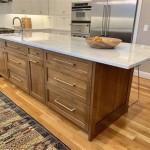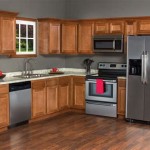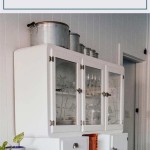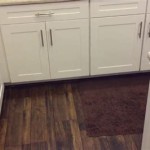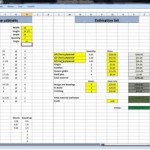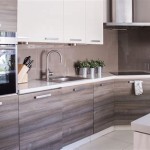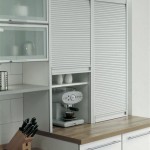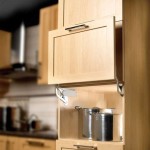What Is The Cost to Resurface Kitchen Cabinets?
Kitchen cabinet resurfacing, also known as refacing, presents a cost-effective alternative to complete cabinet replacement. It involves replacing the existing cabinet doors and drawer fronts with new ones, and applying a veneer over the existing cabinet boxes (the frames). This process enhances the kitchen's aesthetic appeal without the extensive demolition and installation associated with a full remodel. Understanding the factors that influence the cost of resurfacing is crucial for homeowners planning to update their kitchens while adhering to a budget.
The cost of resurfacing kitchen cabinets is variable, dependent on several factors. These elements include the size of the kitchen, the materials selected for the new doors and veneer, the complexity of the design, and the labor costs in the homeowner's specific geographic location. This article aims to provide a comprehensive overview of these cost drivers, offering a detailed understanding of what to expect when considering this renovation option.
Key Cost Factors in Cabinet Resurfacing
Several key components influence the overall cost of kitchen cabinet resurfacing. Understanding these factors allows homeowners to make informed decisions about their budget and design choices. These elements directly affect the total expenditure and the final appearance of the kitchen.
1. Kitchen Size and Cabinet Count: The size of the kitchen, specifically the number of cabinets that need to be resurfaced, directly correlates with the overall cost. A larger kitchen necessitates more materials (doors, drawer fronts, veneer) and more labor hours. Each cabinet box needs to be properly prepared, and each door and drawer front needs to be fitted correctly. This translates into a higher total project cost. Assessing the exact number of cabinets, including both upper and lower units, is a critical first step in estimating the potential expense. It is also important to identify any specialty cabinets, such as those with glass fronts or unique dimensions, as these may incur additional costs.
2. Material Choice for Doors, Drawer Fronts, and Veneer: The material used for the new cabinet doors, drawer fronts, and veneer represents a significant portion of the resurfacing cost. Options range from budget-friendly laminate and rigid thermofoil (RTF) to mid-range wood veneers and painted medium-density fiberboard (MDF), to high-end solid wood. Laminate and RTF are typically the most affordable, providing a durable and easy-to-clean surface. Wood veneers offer a natural wood look at a moderate price point. MDF, often used for painted cabinets, provides a smooth surface for painting and resists warping. Solid wood is the most expensive option, offering the highest quality and aesthetic appeal but requiring more maintenance.
The choice of material influences not only the cost but also the durability and aesthetic of the finished cabinets. Homeowners should consider their lifestyle and budget when selecting materials. For example, a busy family might prioritize the durability and ease of cleaning that laminate offers, while a homeowner looking for a high-end aesthetic might opt for solid wood or a high-quality wood veneer.
3. Labor Costs and Professional Installation: Labor costs constitute a significant portion of the overall resurfacing expense. Hiring a professional installer ensures a high-quality finish and minimizes the risk of errors. Labor costs can vary depending on the complexity of the project, the experience of the installer, and the homeowner's geographic location. Installation involves removing the existing doors and drawer fronts, preparing the cabinet boxes, applying the veneer, and installing the new doors and hardware. The complexity of the design, such as intricate moldings or custom details, can also increase labor costs.
Obtaining multiple quotes from different contractors is recommended to compare pricing and ensure a competitive rate. It is also important to verify the contractor's credentials, insurance, and references before hiring them. While DIY resurfacing is possible, it often requires specialized tools and skills. If not executed properly, a DIY project can result in a less-than-professional finish and potentially damage the cabinets, ultimately costing more in the long run.
Detailed Breakdown of Resurfacing Costs
To provide a more granular understanding of the costs involved, this section breaks down the different components and their associated expenses.
1. Cost of Materials: The cost of materials varies widely based on the type and quality selected. Laminate or RTF doors and drawer fronts can range from $5 to $15 per square foot. Wood veneer options can cost between $15 and $30 per square foot, while solid wood doors can range from $30 to $70 or more per square foot. The veneer used to cover the cabinet boxes also varies in price, depending on the material and thickness. Laminate veneer is typically the most affordable, while wood veneer is more expensive.
Hardware, such as hinges and handles, also contributes to the material cost. High-quality hardware can enhance the overall look and feel of the cabinets, but it also comes at a premium. The cost of hardware can range from a few dollars per piece to upwards of $20 or more, depending on the style and finish.
2. Cost of Professional Labor: Professional labor costs typically range from $70 to $150 per hour. The total labor cost depends on the size of the kitchen and the complexity of the project. A small kitchen might take one or two days to resurface, while a larger kitchen could take several days. Factors such as the need for custom modifications or the presence of difficult-to-reach areas can also increase labor costs.
The preparation work involved in resurfacing, such as sanding and cleaning the cabinet boxes, can also impact labor costs. If the existing cabinets are in poor condition, requiring extensive repairs, this will add to the overall expense. It is important to discuss the scope of work with the contractor and obtain a detailed estimate that includes all labor charges.
3. Additional Costs to Consider: In addition to the primary costs of materials and labor, several other factors can contribute to the overall expense of kitchen cabinet resurfacing.
a. Permits: In some jurisdictions, a building permit may be required for kitchen renovations, including cabinet resurfacing. The cost of a permit can vary depending on the location and the scope of the project. It is important to check with the local building department to determine if a permit is necessary and to obtain the required paperwork.
b. Hardware Upgrades: As mentioned earlier, upgrading the cabinet hardware can enhance the aesthetic appeal of the kitchen. However, it also adds to the overall cost. Homeowners should consider their budget when selecting hardware and choose options that complement the style of the cabinets.
c. Structural Modifications: If any structural modifications are needed, such as adding or removing cabinets, this will increase the cost of the project. These modifications may require additional permits and specialized labor. It is important to discuss any structural changes with the contractor and obtain a detailed estimate of the associated costs.
d. Unexpected Issues: During the resurfacing process, unexpected issues may arise, such as hidden damage or plumbing/electrical problems. These issues can add to the cost of the project and may require additional repairs. It is advisable to set aside a contingency fund to cover any unforeseen expenses.
Estimating Tool and Example Scenarios
Calculating the exact cost of resurfacing requires considering all the factors mentioned above. While an online calculator can provide a rough estimate, it is best to obtain quotes from multiple contractors for a more accurate assessment.
Estimating Tool Elements: To create a basic estimate, consider the following:
- Measure the total square footage of cabinet doors and drawer fronts.
- Select the desired material (laminate, veneer, solid wood).
- Estimate labor hours (consult with contractors for average time based on kitchen size).
- Add hardware costs.
- Factor in a contingency fund for unexpected expenses (e.g., 10% of the total estimated cost).
Scenario 1: Small Kitchen with Laminate Resurfacing
Assumptions:
* 100 square feet of cabinet doors and drawer fronts. * Laminate material cost: $10/square foot. * Labor cost: 40 hours at $80/hour. * Hardware cost: $200. * Contingency: 10%.Calculations:
* Material cost: 100 sq ft x $10/sq ft = $1000. * Labor cost: 40 hours x $80/hour = $3200. * Total direct cost: $1000 + $3200 + $200 = $4400. * Contingency: $4400 x 10% = $440. * Estimated total cost: $4400 + $440 = $4840.Scenario 2: Medium Kitchen with Wood Veneer Resurfacing
Assumptions:
* 150 square feet of cabinet doors and drawer fronts. * Wood veneer material cost: $25/square foot. * Labor cost: 60 hours at $100/hour. * Hardware cost: $400. * Contingency: 10%.Calculations:
* Material cost: 150 sq ft x $25/sq ft = $3750. * Labor cost: 60 hours x $100/hour = $6000. * Total direct cost: $3750 + $6000 + $400 = $10150. * Contingency: $10150 x 10% = $1015. * Estimated total cost: $10150 + $1015 = $11165.Scenario 3: Large Kitchen with Solid Wood Resurfacing
Assumptions:
* 200 square feet of cabinet doors and drawer fronts. * Solid wood material cost: $50/square foot. * Labor cost: 80 hours at $120/hour. * Hardware cost: $600. * Contingency: 10%.Calculations:
* Material cost: 200 sq ft x $50/sq ft = $10000. * Labor cost: 80 hours x $120/hour = $9600. * Total direct cost: $10000 + $9600 + $600 = $20200. * Contingency: $20200 x 10% = $2020. * Estimated total cost: $20200 + $2020 = $22220.These scenarios illustrate how the choice of materials and the size of the kitchen significantly impact the overall cost. Remember to adjust the estimates based on specific needs and local pricing.
In conclusion, determining the cost to resurface kitchen cabinets involves analyzing several interlinked factors. Material selection, kitchen size, and labor costs stand as the primary drivers influencing the investment. Homeowners who carefully examine and budget for these elements can successfully achieve a kitchen transformation that is both aesthetically pleasing and financially sound.

Fixr Com Cost To Reface Cabinets Cabinet Refacing

Average Cost To Reface Cabinets By Li Foot Material And Type Forbes Home

Breaking Down The Costs Of Cabinet Refacing

Cabinet Refacing Process And Cost Compared To Painting

What Is The Average Cost For Cabinet Refacing

Kitchen Cabinet Refacing Cost

How Much Does It Cost To Refinish Cabinets In Your Home

How Much Does Cabinet Refacing Cost 2024 S Homeguide

Kitchen Cabinet Refacing Cost Calculator 2024

Average Cost Of Kitchen Cabinet Refacing Mcmanus And Bath Design Build Remodeling Contractors Tassee
Related Posts

